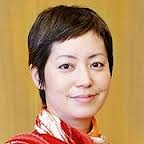The Japan’s Ministry of Health, Labour and Welfare recently released a performance report on the current Japanese Employee’s Pension Fund System, stating the current Employee Pension Fund system is outperforming and on the edge of collapsing. Generally speaking, a well performed healthy investment must make 1.5x its original asset. The performance report shows only 10% of the current Employee Pension assets are performing at or above market level while rests of the 90% investment assets are disqualified. What would happen next for the Japanese Employee Pension Fund?
(article edited by Diana Liu)
Expert Profile
Sachiko ohi is one of the very first few who introduced alternative investments to the Japanese Institutional markets. She has over 20 years of experience on Wall Street and Hedge Fund industry and is a member of the Japan Society of Monetary Economics and the Pension Academy of Japan. In addition, she has published numerous books and articles on many Japanese business magazines. She recently published her latest book titled “How to Double the National Wealth”, available only in Japanese.
Achievements:
- Publications on alternative investments
(books and numerous articles on the Japanese business magazines).
Media appearances on NHK TV, NHK radio etc. - Sachiko Ohi is a member of Japan Society of Monetary Economics
and The Pension Academy of Japan. - Sachiko teaches at Bunkyo University as lecturer
and is Research Fellow at Musashino University. - Sachiko Ohi’s Specialties:
Independent consulting on strategic “pull-marketing” in the field of alternative investments (hedge funds, private equity funds); established network/universe in the Japanese institutional market. - Sachiko Ohi’s Education
Keio University (BA Political Science, MA US Economic History, completed
Ph.D. course but dissertation in 1987)
Smith College, American Studies (award Fulbright Scholarship in 1985)
The Johns Hopkins University- Paul Nitze School of Advanced
International studies (SAIS) - Sachiko Ohi’s Honors:
Fulbright Scholar in 1985
Koizumi Shinzo Award in 1983, at Graduate School of Economics,
Keio University
- What is the cause to the failure of our current Employee Pension Fund System?
-
Sachiko Ohi explains the easy answer to the cause of the out performance of the current Employee Pension Fund System would be the fund’s management failure to make corresponding and adaptive changes in responsive to the market change.
However, to explain what led to the management failure or the main cause behind such unproductive and effective management practice, we must relate back to the fundamentals of the Japanese political and cultural influence.
- 3 Structural reforms are underway
-
As Ms. Ohi states that current “Japanese pension system faces big challenges to reform both on the institutional side and investment management side.” The following structural reforms are underway.
(1) The Employee’s Pension Fund (EPF) currently have over 4 million members and AUM JPY 27 trillion, and it is expected to collapse in the next 10 years. In events of such, JPY 22 trillion out of JPY 27 trillion will be transferred back to EPF Insurance.
(2) Pension Fund Association (PFA)’s JPY 10 trillion assets are set to be transferred to the GPIF in the next 10 years. GPIF will be the biggest sponsor with JPY 120 trillion.
(3) Corporate Pension Funds currently have 7.27 million members in the defined-benefit (DB) plan and AUM JPY 41 trillion. In the DB plan, they lowered the prospective yield to 1-2% in order to reduce the pension liability and consolidate its corporate finance. However, with the current aging demography in Japan, such low yield will dramatically reduce the benefits for future generation.
- Four key points to ensure the success of the structural reforms are
-
(1) Efficient Diversification: GPIF will be the largest sole entity with asset of JPY120 trillion, which will be divided into several entities for more efficient asset management. One of them could be a Japanese version of SWF, dividing up asset into more specific management entities.
(2) Alternative investment: Pension sponsors should promote more alternative investments in order to maintain sustainable alpha (absolute returns) on their mid-long investment horizon.
(3) Experienced Management: they should retain more professional gatekeepers to facilitate various foreign investments in alternative funds, risk management, and fiduciary services. In summary, they need more professional front, middle, back-office managements.
(4) Diversification with new asset class: pension sponsors should have more diversified, efficient portfolio management, asset allocation system in combining traditional and alternative investments, liquid and illiquid assets, and with geographical diversification in developed countries, emerging countries, Africa, and countries rich in natural resources, etc.
- Why is alternative investment a possible solution? How can we do to implement it to the pension fund managers?
-
Being one of the first who introduced Hedge Fund investment in Japan in the beginning of 2000s, Sachiko Ohi shares similar views on the need to seek for alternative investments. Hedge fund became popular in the Japanese market in early 2000s and today roughly 70% for pension investors.
Sachiko Ohi firmly believes that alternative market is at the beginning of another growth cycle again, meaning it carries great potential. Employee Pension Assets should be managed under models such as the Government Pension Investment Fund where assets are diversified with detailed research.
- Advice for foreign investors who are interested in Japanese Pension Funds and other LPs
- Due to conservativeness of the Japanese culture, to succeed one must have good return profile, constant and long-term marketing strategies, and credibility in order to gain Japanese trust. It is always good to have a local partner or professionals to guide with culture difference and the Japanese way of business decision-making.
